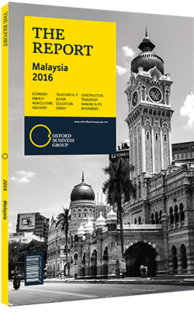As Malaysia rolls back fuel subsidies, energy costs are reflecting market prices
In November 2014, Prime Minister Najib Razak announced that the country’s long-running system of fuel subsidies would be coming to an end in the following month. Over a year later, the expected pain that this move augured has been less than many had first feared. Former Central Bank governor Zeti Akhtar Aziz remarked as much in March 2016, stating that the Malaysian economy was “no longer about oil and gas” and that the government’s reforms to reduce and remove subsidies had cut the budget’s dependency on hydrocarbons “by half”.
Although consumers may not have seen much change in costs as global barrel prices fell, the economy overall is much the stronger for the reforms, with a serious fiscal imbalance created by the subsidy system now largely corrected.
Keeping It Affordable
Malaysia first introduced subsidies for transport fuel back in 1983. At the time, the rationale for their introduction was to protect low-income Malaysians, while also stimulating economic activity and growth. The subsidy system chosen was the automatic pricing mechanism (APM), which set prices for RON92 and RON95 fuels, and liquefied petroleum gas (LPG), the latter used both in cars and for cooking in Malaysia.
The APM was used to calculate the sales price using a formula that took account of the Mean of Platts Singapore base price, the purchase price paid by Malaysian oil companies, operational costs, margins for the oil companies and petrol station operators, sales taxes and a final subsidy as and when necessary to keep the final, calculated price at or below the retail price. The system ensured that the price at the pump fluctuated very little over the years. Yet, with oil and gas prices rising during the first decade of the millennium, this subsidy became increasingly expensive. When Malaysia became a net oil importer in 2011, the costs also rose. By 2005, the system accounted for 11.23% of total government operating expenditure, while by the time of the prime minister’s announcement, the system was costing around RM20bn ($5bn) a year – even at a time of declining barrel prices.
In place of the APM, Malaysia then introduced for RON95 the same system it had been using for RON97 since 2009. This is an automatic managed float system, which adjusts prices according to the market rate. This is essentially the APM without the final subsidy – the government intervention to keep the calculated price stable. The pump price thus reflects the market price more closely, and therefore should also be able to rise and fall, but the government still has a major role in determining the final price. For example, it sets the profit margins for the oil companies and the station owners.
Electricity
The government has also moved to cut subsidies on electricity. In the 2016 budget, a subsidy for households whose monthly bills amount to less than RM20 ($4.95) sees the entire bill covered by the government, under a scheme to help poor families. This RM150m ($37.1m) subsidy is now being removed. At the same time, the new imbalance cost pass-through system for electricity tariffs is in operation in Peninsular Malaysia, with this allowing real costs to be passed on to consumers by the distributors. This has led to some price hikes in recent times, as both coal and piped gas prices have risen (these are two of the most important feedstock sources for Malaysian power generation), yet it had also allowed for power rebates, as at the end of 2015. The oil and gas and electricity sectors are thus more becoming responsive to market prices, even if the government still plays a major role in determining the final bill.
Meanwhile, the fiscal burden of recent years created by the subsidies system has undoubtedly been lifted, with lower overall oil and gas prices considerably easing energy costs for many Malaysians.
You have reached the limit of premium articles you can view for free.
Choose from the options below to purchase print or digital editions of our Reports. You can also purchase a website subscription giving you unlimited access to all of our Reports online for 12 months.
If you have already purchased this Report or have a website subscription, please login to continue.

